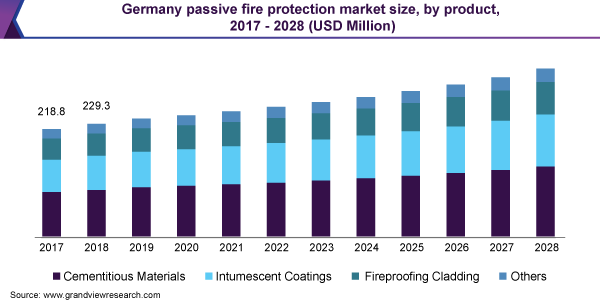microRNA Industry Overview
The global microRNA market size was valued at USD 854.6 million in 2020 and is expected to expand at a compound annual growth rate (CAGR) of 19.8% from 2021 to 2028.
Key trends that have collectively contributed to market growth over the years include emerging microRNA (miRNA) tools for disease-associated analytical applications, immense traction gained by miRNA target prediction and identification, and persisting wide adoption of the majority of the miRNA tools. Additionally, miRNAs are amongst the most important potential biopharmaceutical candidates that are entering in commercial space for developing potential future medicines.
Biopharmaceutical companies are increasingly engaging in the search for new therapeutic molecules that can act as new drugs which is further driving the market for microRNA. There are several miRNA-based candidates that are under clinical trials such as anti-miR compounds and specific inhibitors for miRNAs which can act as potential therapeutic solutions. Hence, RNA therapeutics is considered a trending investing area that will lead to the development of profitable drugs.
Gather more insights about the market drivers, restrains and growth of the Global microRNA Market
Increasing adoption of microRNA as a biomarker is driving the market. The miRNA biomarkers are of particular focus on genome-wide studies, and data-driven methodology, as they demonstrate high reproducibility and robustness when compared to traditional methods. Hence, they serve as promising candidates for the development of biomarkers. Moreover, the growing interest in liquid biopsies has further led to the increasing importance of miRNAs for biomarker discovery and development.
A steep increase in the research activities exploring the potential of miRNA biomarkers across prognosis, diagnosis, and therapeutics is expected to favor the market expansion in the near future. For instance, in January 2020, researchers explored the possibility of miRNA found in peripheral blood as a biomarker for diagnosing Bipolar II disorder (BD-II) using next-generation sequencing. miRNAs can be a possible noninvasive solution for the diagnosis of other neurodegenerative disorders.
In addition, the technological innovation for improving the sensitivity and selectivity of miRNA detection is further contributing to the growth of the market for microRNA. The newly developed methods for miRNA detection include nanoparticle-based amplification, RCA-based methods, DSN-based methods, LAMP-based methods, and enzyme-free amplification. Similarly, in January 2020, researchers developed a program-based isothermal amplification technique for specific and quantitative digital measurement of miRNA. The advantage of the system is that contamination is reduced by the fact that this system is dependent on the signal amplification process rather than direct replication of the targeted sequence, as it is done using PCR-based approaches.
Browse through Grand View Research's Biotechnology Industry Research Reports.
• Genotyping Market: The global genotyping market was valued at USD 12.65 billion in 2021 and is expected to expand at a compound annual growth rate (CAGR) of 15.6% from 2022 to 2030. The growth can be attributed to technological advancements, the rising prevalence of cancer & genetic disorders, and increasing R&D funding for precision medicine research.
• Cell Culture Media Market: The global cell culture media market size was valued at USD 3,616.8 million in 2021 and is expected to expand at a compound annual growth rate (CAGR) of 12.1% from 2022 to 2030. Cell culture media is generally a gel or liquid including compounds required to regulate and support the growth of cells or microorganisms used in the manufacturing of biopharmaceuticals.
microRNA Market Segmentation
Grand View Research has segmented the global microRNA market on the basis of products, services, application, end-use, and region:
microRNA Products Outlook (Revenue, USD Million, 2017 - 2028)
• Instruments
• Consumables
microRNA Services Outlook (Revenue, USD Million, 2017 - 2028)
• Service Type
• By Specimen
microRNA Application Outlook (Revenue, USD Million, 2017 - 2028)
• Cancer
• Infectious Diseases
• Immunological Disorder
• Cardiovascular Disease
• Neurological Disease
• Others
microRNA End-use Outlook (Revenue, USD Million, 2017 - 2028)
• Biotechnology & Pharmaceutical Companies
• Academic & Government Research Institutes
• Other end-users
microRNA Regional Outlook (Revenue, USD Million, 2017 - 2028)
• North America
• Europe
• Asia Pacific
• Latin America
• Middle East & Africa
Key Companies profiled:
Some prominent players in the Global microRNA Market include
• Merck KGaA
• Thermo Fisher Scientific, Inc.
• Horizon Discovery Ltd.
• Synlogic
• QIAGEN
• GeneCopoeia, Inc.
• New England Biolabs
• Quantabio
• NanoString
• BioGenex
• SeqMatic LLC
• Miltenyi Biotec
• Sistemic Scotland Limited
• Biodynamics Laboratory Inc.
• OriGene Technologies, Inc.
Order a free sample PDF of the microRNA Market Intelligence Study, published by Grand View Research.





